Greetings, fellow SkyWatchers! Are you ready for the weekend? Then let’s spend it “stellar” as we take a look at a great series of open galactic star clusters. Gathering a few photons will enrich both the spirit and the mind! If you’re ready for some history, science and challenges, then follow me…
March 5, 2010 – This date celebrates the 1512 birth of Gerardus Mercator. Mercator was the cartographer who created the Mercator map projection, the series of parallels and meridians drawn as straight lines to allow an accurate ratio of latitude to longitude. Mercator also designed the first celestial globe in 1551.
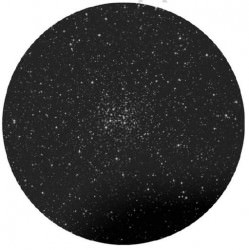 Tonight let’s take in a galactic star cluster! Find the area easily by aiming binoculars about halfway between Alpha Orionis and Gamma Geminorum (RA 06 13 42 Dec +12 48 06). Look for a faint pair of stars known as K Orionis, but don’t confuse them with slightly brighter Xi and Nu. Concentrate on the northernmost of the K pair, and you’ll pick up a slight condensation of faint stars— NGC 2194. While this Herschel ‘‘400’’ target is sufficiently bright to see in small optics, its true beauty shines in larger telescopes. This rich, young concentration of stars is over 3,700 light-years away and is less than 9,000 years old. Photometric studies of this neophyte cluster show it to be metal-poor for its age, but NGC 2194 is definitely a very pleasing sprinkling of stars to enjoy on a winter’s night!
Tonight let’s take in a galactic star cluster! Find the area easily by aiming binoculars about halfway between Alpha Orionis and Gamma Geminorum (RA 06 13 42 Dec +12 48 06). Look for a faint pair of stars known as K Orionis, but don’t confuse them with slightly brighter Xi and Nu. Concentrate on the northernmost of the K pair, and you’ll pick up a slight condensation of faint stars— NGC 2194. While this Herschel ‘‘400’’ target is sufficiently bright to see in small optics, its true beauty shines in larger telescopes. This rich, young concentration of stars is over 3,700 light-years away and is less than 9,000 years old. Photometric studies of this neophyte cluster show it to be metal-poor for its age, but NGC 2194 is definitely a very pleasing sprinkling of stars to enjoy on a winter’s night!
Are you ready for an open cluster that’s suited for all optics? Then let’s take on NGC2287. Located about two finger-widths south of Alpha Canis Majoris (RA 06 46 00 Dec +20 46 00), only an open cluster this bright could stand up against brilliant Sirius. From a dark-sky location, your unaided eye can even spot this magnitude 4.5 star vault as a hazy patch. Aristotle saw it as early as 325 BC! Officially discovered by Hodierna, we know it best by the designation Messier Object 41.
Even from 2,300 light-years away, the cluster’s brightest star, an orange giant, stands out clearly from the stellar nest. With large aperture, you’ll notice other K-type stars, all very similar to Sol. Although small scopes and binoculars won’t reveal too much color, you might pick up on the blue signature of young, hot stars. NGC 2287 could be anywhere from 190 to 240 million years old, but its stars shine as brightly now as they did in Aristotle’s day!
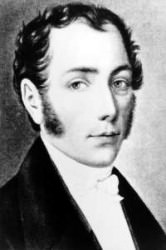 March 6, 2010 – If you see sunshine today, then celebrate the 1787 birth on this date of Joseph Fraunhofer—a trailblazer in modern astronomy. His field? Spectroscopy. Fraunhofer developed scientific instruments and specialized in the area of applied optics. While designing the achromatic objective lens for a telescope, he saw the spectrum of sunlight as it passed through a thin slit and the dark emission lines. Fraunhofer recognized that they could be used as wavelength standards, so he began measuring, labeling the most prominent with the letters still used today. His skill in optics, mathematics, and physics led Fraunhofer to design and build the very first diffraction grating. You’ve probably seen these little rainbows hundreds of times in your life without even realizing what they are. Would you like to create your own grating? Take a piece of ordinary clear cellophane (a bit of clean food wrapping is fine) and scratch it lightly a few times in one direction only with a piece of sandpaper. Hold it adjacent to a bright light source and tilt it until you see hundreds of hair-fine lines of color. Yes, it’s crude. . . but it works! Did Fraunhofer’s telescope designs also succeed? Of course! His achromatic objective lens is still used in modern telescopes.
March 6, 2010 – If you see sunshine today, then celebrate the 1787 birth on this date of Joseph Fraunhofer—a trailblazer in modern astronomy. His field? Spectroscopy. Fraunhofer developed scientific instruments and specialized in the area of applied optics. While designing the achromatic objective lens for a telescope, he saw the spectrum of sunlight as it passed through a thin slit and the dark emission lines. Fraunhofer recognized that they could be used as wavelength standards, so he began measuring, labeling the most prominent with the letters still used today. His skill in optics, mathematics, and physics led Fraunhofer to design and build the very first diffraction grating. You’ve probably seen these little rainbows hundreds of times in your life without even realizing what they are. Would you like to create your own grating? Take a piece of ordinary clear cellophane (a bit of clean food wrapping is fine) and scratch it lightly a few times in one direction only with a piece of sandpaper. Hold it adjacent to a bright light source and tilt it until you see hundreds of hair-fine lines of color. Yes, it’s crude. . . but it works! Did Fraunhofer’s telescope designs also succeed? Of course! His achromatic objective lens is still used in modern telescopes.
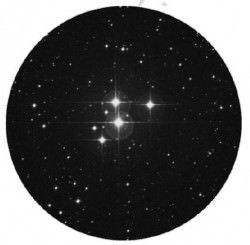 Tonight journey south of Orion to Lepus and its brightest star—Alpha. Named Arneb, this double star resides about 900 light-years away. Its wide separation of 35.500 means it’s probably not a true physical pair, but the 11th magnitude disparate companion is a nice challenge. For binoculars and small scopes, hop due east of Alpha about a finger-width for brilliant multiple-star system and open cluster NGC2017. The gravitationally bound stars in this small open cluster are a well-studied source of radio and infrared emission. NGC2017 produces a dense wind from a thin HII region hidden within it, which may come from a loose distribution of gas and dust. Power up, and the primary colorful members begin to split into disparate pairs as the combination of aperture and magnification increases resolution. It’s a much underrated jewel box!
Tonight journey south of Orion to Lepus and its brightest star—Alpha. Named Arneb, this double star resides about 900 light-years away. Its wide separation of 35.500 means it’s probably not a true physical pair, but the 11th magnitude disparate companion is a nice challenge. For binoculars and small scopes, hop due east of Alpha about a finger-width for brilliant multiple-star system and open cluster NGC2017. The gravitationally bound stars in this small open cluster are a well-studied source of radio and infrared emission. NGC2017 produces a dense wind from a thin HII region hidden within it, which may come from a loose distribution of gas and dust. Power up, and the primary colorful members begin to split into disparate pairs as the combination of aperture and magnification increases resolution. It’s a much underrated jewel box!
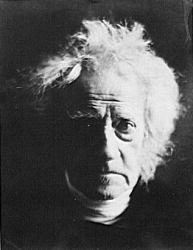 March 7, 2010 – Today we celebrate two notable births. The year 1837 is Henry Draper’s, first to photograph the stellar spectrum; and 1792 is the year Sir William Herschel’s only child—John—was born. John Herschel began his astronomical career in 1816 when he built his first telescope. His path led him to eventual British knighthood for furthering his father’s work, and to South Africa to complete his father’s survey by cataloging the stars, nebulae, and other objects of the southern skies. In his own words, ‘‘He that on such quest would go must know not fear or failing.’’ John returned to England in 1838, published his work, fathered 12 children, named the moons of Saturn and Uranus, and expanded the field of photography. He was a prodigious author, and you’ll even find examples of his handiwork in the Encyclopedia Britannica!
March 7, 2010 – Today we celebrate two notable births. The year 1837 is Henry Draper’s, first to photograph the stellar spectrum; and 1792 is the year Sir William Herschel’s only child—John—was born. John Herschel began his astronomical career in 1816 when he built his first telescope. His path led him to eventual British knighthood for furthering his father’s work, and to South Africa to complete his father’s survey by cataloging the stars, nebulae, and other objects of the southern skies. In his own words, ‘‘He that on such quest would go must know not fear or failing.’’ John returned to England in 1838, published his work, fathered 12 children, named the moons of Saturn and Uranus, and expanded the field of photography. He was a prodigious author, and you’ll even find examples of his handiwork in the Encyclopedia Britannica!
Tonight let’s honor J. Herschel with a very beautiful open star cluster. Begin with Sirius and the southern upside down Y formation of Canis Major, whose crux is Delta. Hop northeast to Tau for open cluster NGC 2362 (RA 07 18 36 Dec 24 59 00). In binoculars, Caldwell 64 appears as two stars—Tau and the variable UW. At minor magnification, Tau shows a slight nebulosity, the many unresolved stars surrounding it. Now power up with a telescope and behold the ‘‘ Mexican Jumping Star!’’ This rich, 4,600 light-years distant gathering contains about 40 members and is one of the youngest of known star clusters. Many resolvable stars haven’t yet reached the main sequence!
Still pulling together, the cluster is estimated to be less than a million years old. The central star—Tau—is a true member and one of the most intrinsically luminous stars known. This group may last as long as the Pleiades but will pull apart long before reaching the Hyades’’ age. Tau’s immense stellar winds will blow away any accretion around the smaller stars. Magnify as much as skies will allow. As individual stars begin to resolve in and out around its bright central member, you can see how it got its nickname!
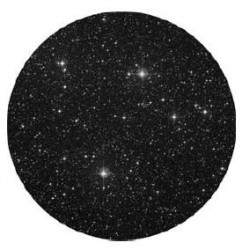 Now head for the eastern star, Eta Canis Majoris. Aim your binoculars about one field further south. Difficult for northern observers, this collection is visible unaided in the Southern Hemisphere. Collinder 140 (RA 07 23 18 Dec 32 04 00) is around magnitude 3.5 and is a rich open cluster. Located around 1,000 light-years away, and estimated to be 22 million years old, even small optics will enjoy this large, jewel-like collection of stars, which includes the double Dunlop 47 among its many binary systems. Studied for its unusual patterns of stellar evolution, Collinder 140 is worth some of your study time as well!
Now head for the eastern star, Eta Canis Majoris. Aim your binoculars about one field further south. Difficult for northern observers, this collection is visible unaided in the Southern Hemisphere. Collinder 140 (RA 07 23 18 Dec 32 04 00) is around magnitude 3.5 and is a rich open cluster. Located around 1,000 light-years away, and estimated to be 22 million years old, even small optics will enjoy this large, jewel-like collection of stars, which includes the double Dunlop 47 among its many binary systems. Studied for its unusual patterns of stellar evolution, Collinder 140 is worth some of your study time as well!
Until next week? Keep rockin’ the night away….
This week’s awesome cluster images are from the Palomar Sky Survey, Courtesy of Caltech. Thank you so much!



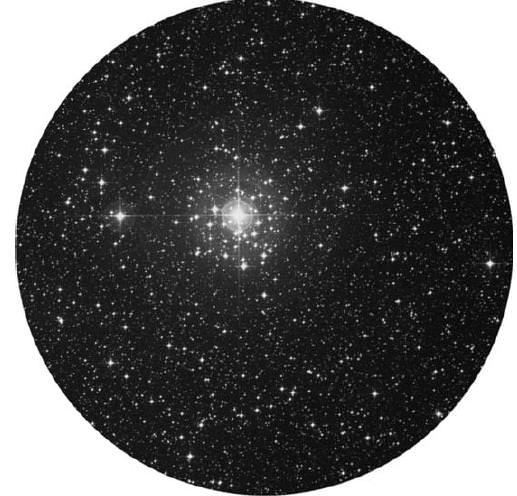
Either the John Hershel image (or is it John Draper?) shows some signs of serious physical disorder (this may be due to the toxic methylmercury poisonings quite common at the time for photographers (a sort of ‘Mad Hatters Syndrome’).
The image is of John Herschel who died aged 79, he was certainly ill in his final days and suffered from gout.
Henry Draper died suddenly aged 45. Both Herschel and Draper were pioneers in the field of photography.
Ref defraction gratings we see them every time we pick up a CD and a rainbow flashes across its surface. It is even possible to build a simple specroscope using one.
@Brian Sheen, thanks for the update. I studied both black and white and color photography in my homemade darkroom, and studied various earlier photographic techniques (i.e. daguerreotypes, tintypes, etc.) and discovered 1st hand the dangerousness of certain chemicals or materials (e.g. nitrocellulose-based film), even with proper ventilation. Some chemicals could kill you on the spot (like magnesium fillings used in ‘flash guns’ of the day). I’m just sayin they were both exposed to toxic photo-chemicals with little idea of the dangers inherent. What does chronic exposure to methylmercury, vaporized silver and any number of chemicals affect us as we age. Think Madame Curie or Willhelm Roentgen.
hi, guys….
you wouldn’t believe the amount of early scientists who died prematurely from exposure to toxic chemicals without them knowing the danger. what’s even worse is you wouldn’t believe the amount of scientists who died prematurely from exposure to toxic chemicals when they were getting to close to disproving someone else’s theories or making a dramatic breakthrough of their own.
there were very dangerous sharks in the waters back then…
i have always liked this particular picture of john herschel because he had 11 children. most of us look like that after 2!
😀